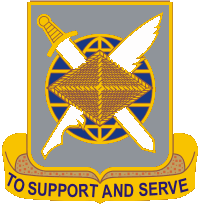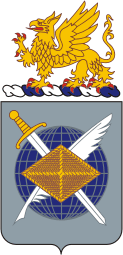About The U.S. Army Finance Corps Association

The Finance Corps Association is a non-profit organization dedicated to furthering the interests of the US Army Finance Corps.
The Association's mission is to foster a spirit of goodwill and cooperative endeavor among its members and to perpetuate friendships and traditions growing out of their membership in the US Army Finance Corps. It also includes the establishment of an educational program to enhance the knowledge and understanding of the history of the Finance Corps and the Finance Regiment. We provide a medium for the mutual exchange and discussion of ideas and information of interest to members of the Association, and promote esprit de corps among all members of the Association and the Finance Corps.
This site has been long in coming, but we hope it has been worth the wait. We hope that it serves you and makes it easier to share information between the organization and its members and internally between members.
Regards,
FCA Staff
Regimental History

The Chief of Staff of the Army authorized the U.S. Army Regimental System in 1981. The Regimental System was designed to strengthen Soldier morale and unit cohesion by affiliating each Soldier throughout the Total Army with the history, traditions, and customs of a single unit or "home" base. By linking Soldier identity to a regiment, planners sought to increase individual commitment to the mission of the organization and the people who comprised it. Since its establishment, the Regimental System has fostered an extended sense of belonging among Soldiers of the various regimental communities of the Army, improved operational effectiveness, and formed the solid foundation from which leaders could build total commitment to the Army's mission around the world.
Department of the Army General Order No. 21, dated 7 May 1987, established the Finance Corps Regiment and designated Fort Benjamin Harrison, Indiana, as its "home." Effective 12 September 1994, due to the closing of Fort Benjamin Harrison, the Finance Regiment's home base, along with the Finance School, was officially transferred to Fort Jackson, South Carolina. As an organized regiment, the Finance Corps serves the professional interests and needs of its members, providing a source of continuing pride in the customs and traditions of the Finance branch and its service to Soldiers and commanders throughout our nation's history. The Commandant, U.S. Army Finance School serves as "Chief of the Branch" and the School Command Sergeant Major serves as the "Command Sergeant Major of the Branch." The Honorary Colonel and Honorary Command Sergeant Major of the Regiment, both distinguished retired members of the Finance Corps, form the bridge connecting the past to the present. The Honorary Colonel of the Regiment is MG Paul P. Burns (U.S. Army, retired); the Honorary Command Sergeant Major of the Regiment is CSM Joseph A. Bouchez (U.S. Army, retired). Upon activation of the regiment in May 1987, the late MG Emmett J. Bean was designated Honorary Colonel of the Corps for his notable and distinguished service to the Finance Corps during World War II and through his retirement from the Army in 1957.
The Finance Regimental Coat of Arms consists of a gold griffin positioned above the Regimental Distinctive Unit Insignia, and a silver gray shield that forms the background for a blue globe with gray gridlines. Crossed over the center of the globe is a silver sword with gold hilt and a silver quill pen. Superimposed over the sword and quill is the gold Finance diamond. The Coat of Arms is symbolic of the Finance Corps' historic mission. The gold griffin stands on a silver and blue wreath with the right front paw raised. In Greek mythology the griffin is symbolically associated with treasure or money. Silver gray and golden yellow are colors long-associated with the Finance Corps and are recognized universally as symbolic of Treasury and monetary matters. The blue globe symbolizes the world-wide mission of the Corps. The sword and quill are reminders of the Finance Corps' essential combat service support role, and the gold Finance diamond is symbolic of the public monies entrusted to the Corps.
History of the Finance Corps

The U.S. Army Finance Corps originated on 16 June 1775, when the Second Continental Congress introduced a resolution appointing a Paymaster General of the Army. Since that day, the U.S. Army has always provided financial service via Finance personnel who were either organized in separate elements or integrated into existing units of the Army.
In 1816 the Pay Department became a separate department. Paymasters, usually with the rank of Major, had the principal duty of paying Soldiers in the regiments. The Paymaster at Army headquarters computed monthly payrolls in his office and went to the field with his “box” of gold and a military guard. Obviously, payday was not the last day of each month everywhere, but once a routine was established, the Soldiers could expect payday to fall approximately the same day each period.
The Pay Department remained unchanged until 1912; when in a major reorganization it joined the Quartermaster Corps. During WWI, the Quartermaster Corps expanded to such a degree that it had a difficult time controlling disbursing and logistical activities. In October 1918 Congress authorized the Finance Service. In June 1920 Congress approved the Finance Department to become a separate branch of the War Department under Brigadier General Herbert M. Lord. Unlike its predecessors, it handled not only military pay and travel expenses, but also all financial activities of the War Department, including centralized disbursing, auditing, and budgeting. In 1933, President Roosevelt directed that the Finance Department assume the obligation of paying the Civilian Conservation Corps.
The Finance Department remained a separate entity until WWII when it joined the office of the Fiscal Director, Army Service Forces. Under this structure, it took on additional responsibilities such as the sale of War Bonds and the promotion of National Service Life Insurance. After the war, the office of the Fiscal Director dissolved and the Finance Department again became an independent Army staff agency. The Army Organization Act of 1950 re-designated the Finance Department as a basic branch and the Finance Corps (Regiment) was activated.
Progress has been an important element of the Corps’ history. Today’s Finance Corps has advanced immeasurably over the first Paymaster General Office, not only in size but also in the quality of service provided. National Providers are building sophisticated systems of the future while the U.S. Army Financial Management School trains our military and civilian personnel to operate these systems. These organizations, together with the many units in the field, work hard “To Support and Serve” both the U.S. Army and our great nation.
By-Laws
Chapters
